Effective waste management is a critical yet often overlooked aspect of running an environmentally sustainable operation. Commercial trash receptacles used in commercial spaces impact recycling rates, landfill diversion, and overall waste reduction. High-quality, well-designed trash cans promote recycling, composting, and proper disposal behaviors from tenants and patrons.
When planning waste management plans for offices, retail complexes, parks, recreation centers, and other public venues in the commercial sector, facility managers must consider receptacle placement, bin style, signage, and other features that encourage proper disposal, sorting, and collection of recyclables, organics, and landfill trash streams. By strategically installing commercial trash receptacles optimized for source separation and recycling convenience, businesses can significantly increase their recycled material yields and meet their sustainability goals and mandatory commercial recycling requirements.
The Importance of Effective Waste Management
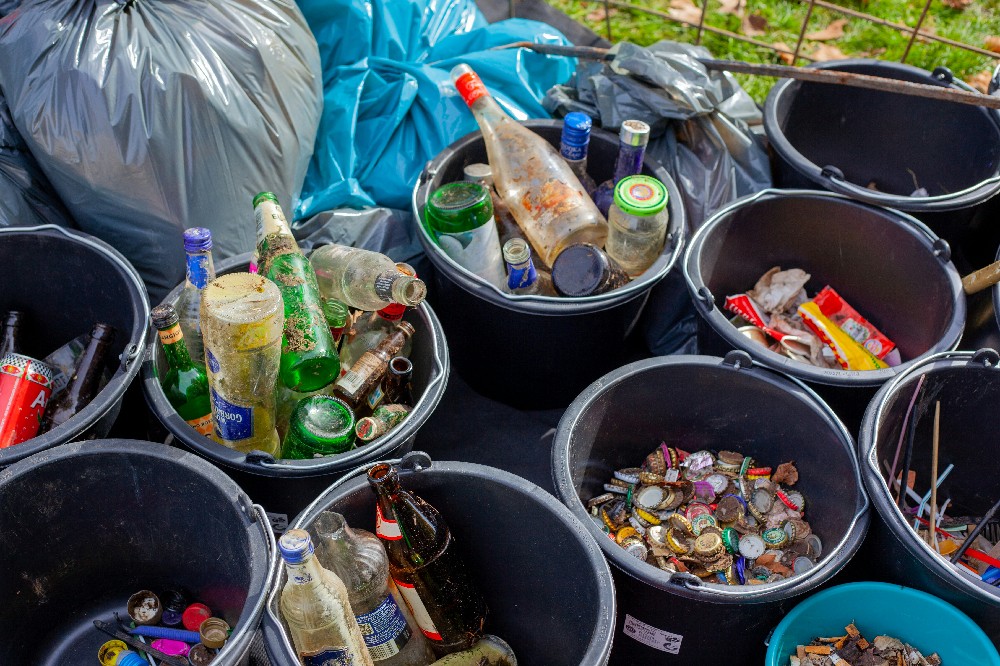
Environmental responsibility is an increasingly prominent priority across the commercial sector. With rising landfill costs and stricter regulations around waste reporting and diversion mandates, businesses must minimize their garbage volume through recycling and composting initiatives. The commercial trash receptacles used in buildings and public spaces provide the infrastructure enabling these programs.
Trash receptacles serve as the primary touchpoint where building occupants interface with waste disposal and sorting systems. If receptacles are poorly designed, inadequately labeled, or inconveniently placed, they become barriers preventing people from properly separating recyclable materials. Effective signage, differentiated opening styles, and strategic locations are essential for readable, accessible trash stations facilitating proper disposal and recycling behaviors.
Studies analyzing waste sorting behaviors reveal that design and convenience factors often outweigh recycling training in driving compliance. Simply adding extra effort, confusion, or distance to recycling stations causes drastic reductions in proper sorting, even when people understand sustainability principles and environmental impacts. By ensuring intuitive, accessible waste separation through high-quality trash receptacles, facility managers can increase landfill diversion without relying entirely on recycling training and public awareness programs.
Why Effective Waste Management Matters
More than simply keeping spaces clean and hygienic, purposeful commercial waste management practices bring cascading operational, economic, and societal benefits:
Reduced Collection Costs
Diverting recyclables and biodegradable waste cuts trash volume up to 80%, allowing less frequent pickups. Efficient route optimization further trims costs. Shared neighborhood receptacles in public spaces also reduce redundancies.
Revenue from Sold Materials
Marketed recyclables and scrap outputs contribute added income from waste streams. Recycling 50% of a typical office’s paper waste alone generates around $1,500 in annual revenue. Compost from food scraps and other organics also carries value.
Lower Disposal Expenses
With tipping fees at landfills and incinerators as high as $100 per ton in parts of North America and Europe, every percentage point increase in diversion saves significantly over direct disposal, despite processing costs.
Improved Health Outcomes
Responsible garbage collection, processing, and solid waste disposal reduce pollution risks to marginalized communities located near legacy landfills and incinerators.
Placemaking and Local Pride
Clean public areas with ample, well-maintained receptacles that reduce litter cultivate welcoming atmospheres and show investment in neighborhoods beyond just beautification.
Consumer Approval
Patrons, employees, and an increasingly sustainability-conscious public hold businesses accountable for environmental practices. Progress on recycling earns reputational value, so poorly managed facilities may turn away business.
Effective commercial solid waste management practices thus create direct economic returns for operators while generating social value — ultimately justifying upfront investments into needed receptacles and services.
Key Considerations for Commercial Trash Cans
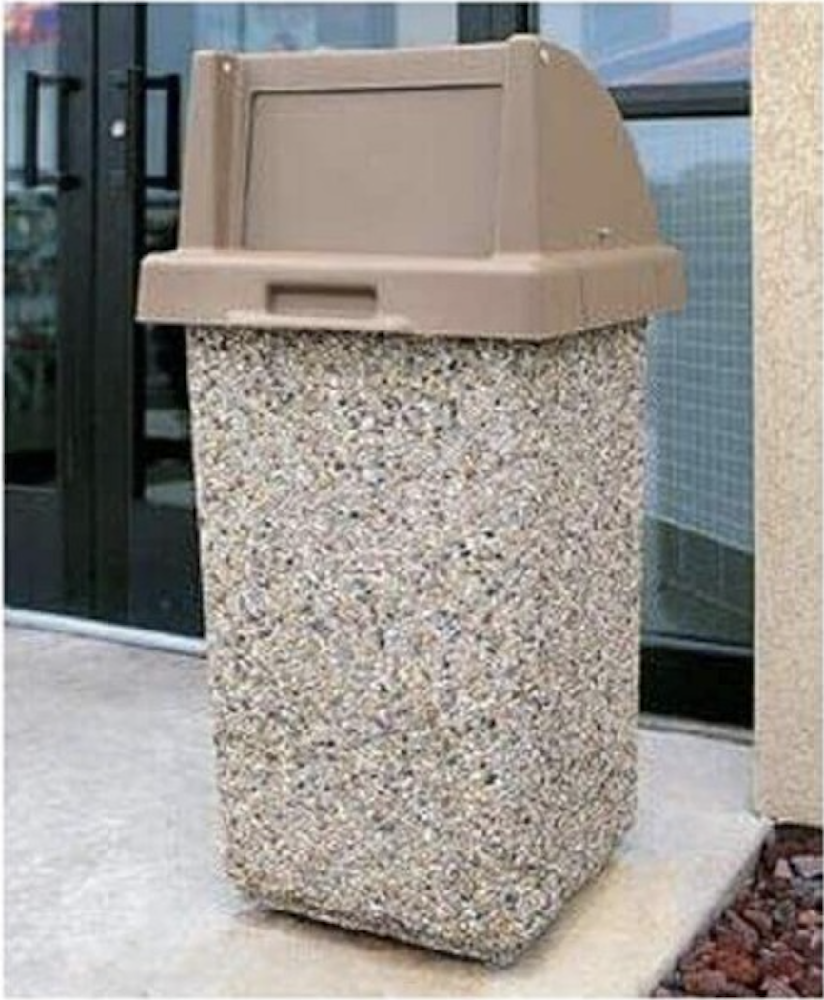
Specifying the appropriate trash can involves balancing durability, recycling/composting compatibility, aesthetics, and maintenance considerations. Facility managers must select receptacles that fit space requirements and also promote recycling. Key factors when evaluating commercial recycling bins include:
Opening Styles
Doors, flipping lids, slots, and other aperture designs signal intended material types and make separation intuitive. Openings sized specifically for bottles/cans, paper, organics, etc. simplify sorting.
Signage
Clear labeling, symbols, color coding, and other visual cues prompt proper sorting on trash receptacles.
Capacity
Receptacles must hold sufficient volumes of waste between emptying with extra leeway during high-traffic events.
Composition
Durability factors like rustproof metals, weather/UV resistance, protective coatings, and antimicrobial additives ensure long-term performance.
Accessibility
Receptacles should accommodate disabilities, facilitating easy access and material disposal for all users, with ADA compliance where mandated.
Style
Aesthetics, integrating corporate branding elements, finishes, and product families allow trash cans to blend into overall space designs.
Balancing these factors when selecting trash cans ensures properly functioning, durable waste stations facilitating recycling behaviors for improved sustainability.
Common Commercial Trash Can Types
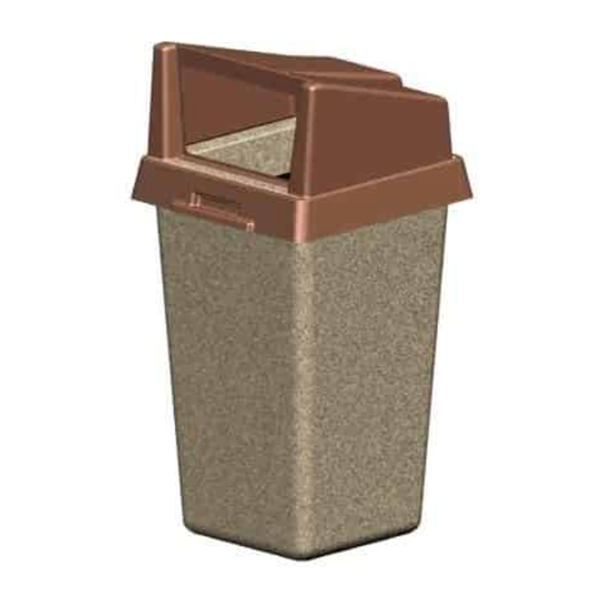
Outdoor Cans
Rugged stainless steel or recycled plastic models withstand weathering in open public spaces with heavy use. Many feature stamped openings, side handle access, plastic liners, and optional domed lids or rain hoods. Popular options include park cans, ash urns, and streetscape receptacles.
Indoor Cans
Available in commercial and office-style models with colors and designs complementing interior aesthetics. Ergonomic step openings, recycling flaps, customizable logos, sensor-enabled compactors, and modular receptacle stations suit indoor settings with lighter loads.
Food Scrap Containers
Hold discarded food scraps from food courts, cafeterias, and kitchens for transfer to composting facilities, recovery as animal feed, or aerobic digestion. Ventilated construction prevents odor. Many integrate with dish return areas.
Outdoor Recycling Stations
All-in-one modular units combine effective graphic signage, dedicated labeled openings for recyclables, trash, and sometimes organics, ample capacity from pairing receptacles, plus convenient access in public areas. When comparing trash can materials, they range from metal and plastic in eye-catching designs.
The optimal receptacle model combines durability, customization potential, recycling compatibility, and maintainability at an affordable budget. Prioritizing design for sustainability brings long-term value beyond upfront cost savings.
Designing Recycling Trash Cans for Maximum Effectiveness
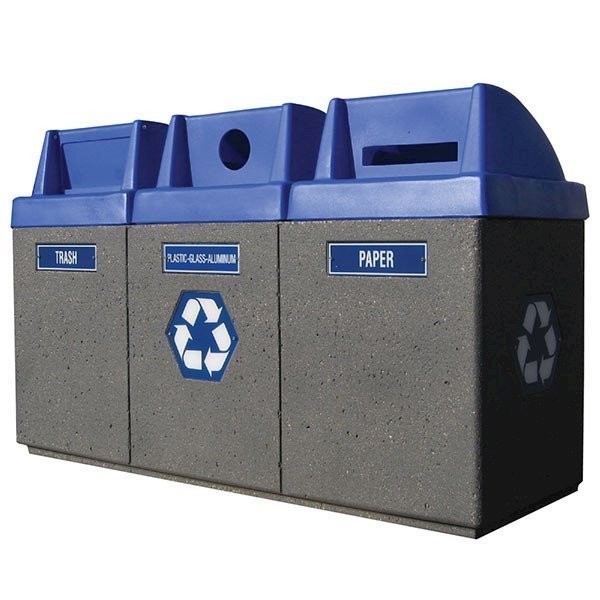
Engineered recycling stations with differentiated receptacles deliver the ideal nudge interventions redirecting ingrained behaviors toward proper sorting. However, solid waste management systems must remain convenient and consistent to drive sustained compliance. Several best practice principles optimize the placement and design of recycling bins:
Right Size Openings
Tailor recycling bin openings to common materials targeted like bottles, cans, or paper. Roughly 8-inch diameter round holes accommodate most containers. Horizontal paper-sized slots keep contents visible.
Angled Partitions
Angled internal divider walls below recycling flap openings guide items downward while keeping contents visible and openings clear. Partitions also reinforce purpose-built sorting.
Consistent Locations
Place receptacle systems near points with natural traffic convergence and discards like waiting areas, copier stations, breakrooms and building exits. Sites shared by all users make recycling universally accessible.
Ample Capacity
Pairing recycling bins with trash receptacles, or installing recycling units as standalone quintets, ensures sufficient cumulative volume across all material streams. Enough total capacity prevents overflows even during events and peak usage times.
Dedicated Organics
Providing commercial food scrap bins in cafeterias, break rooms, and kitchen settings ensures compostable items get properly diverted alongside recyclables. Align organics bins with dish return areas to intercept food waste immediately.
Consolidated Stations
Configuring recycling/trash receptacles in consolidated modular units, rather than standalone dispersed bins, reinforces proper sorting through direct visual juxtaposition of choices. All-in-one stations also simplify required maintenance, maximizing cleanliness of trash can with its placement.
These principles inform impactful recycling-centric waste management layouts catering to ease, visibility and ample capacity — key factors governing sustainable waste sorting behaviors.
Sustainability Impact of Commercial Trash Cans
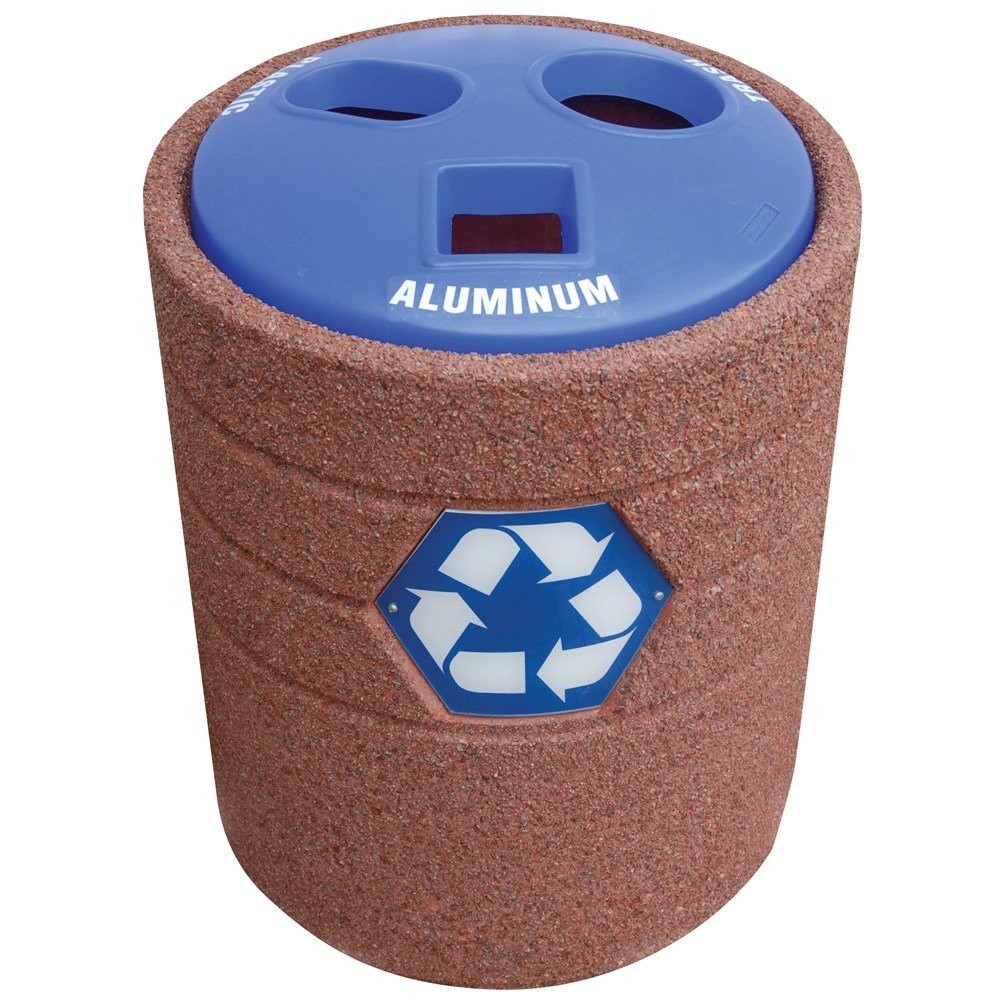
Installing purpose-designed recycling receptacles lays crucial groundwork for improved landfill diversion and upward progress on sustainability metric goals. The direct sustainability impact of enhancing recycling participation includes:
Increase Recycling Rates
Source-separated collection through dedicated bins nearly doubles recycling rates from 20-30% to 50-60% or more in commercial settings. Minimizing sorting efforts at disposal points drives the realization of recycling potential.
Boost Landfill Diversion
With average office building waste breakdowns around 50% paper, 30% compostable organics, and 20% redeemable containers/packaging, recycling participation lifts diversion from 20% closer to 80-90% including organics.
Expand Sustainability Metrics
Growing trash sorting volumes directly lowers reportable waste totals used as benchmarks in rating systems like LEED. More ambitious recycled content usage targets also become attainable upstream.
Strengthen Corporate Responsibility Messaging
Recycling infrastructures allow companies to showcase tangible environmental commitments through facilities and operations. Responsible waste policies also resonate strongly with consumers and strengthen public trust.
Financial Payoffs
While requiring some upfront furnishing investment, enhancing recycling/organics collection pipelines saves money long term considering rising landfill fees. Businesses may also receive tax credits or rebates for recycling equipment and servicing upgrades supporting local environmental goals.
Demonstrating active commitment to sustainability through recycling also produces manifold reputational value for brands and municipalities seeking environmental leadership.
Environmental Justice Impacts
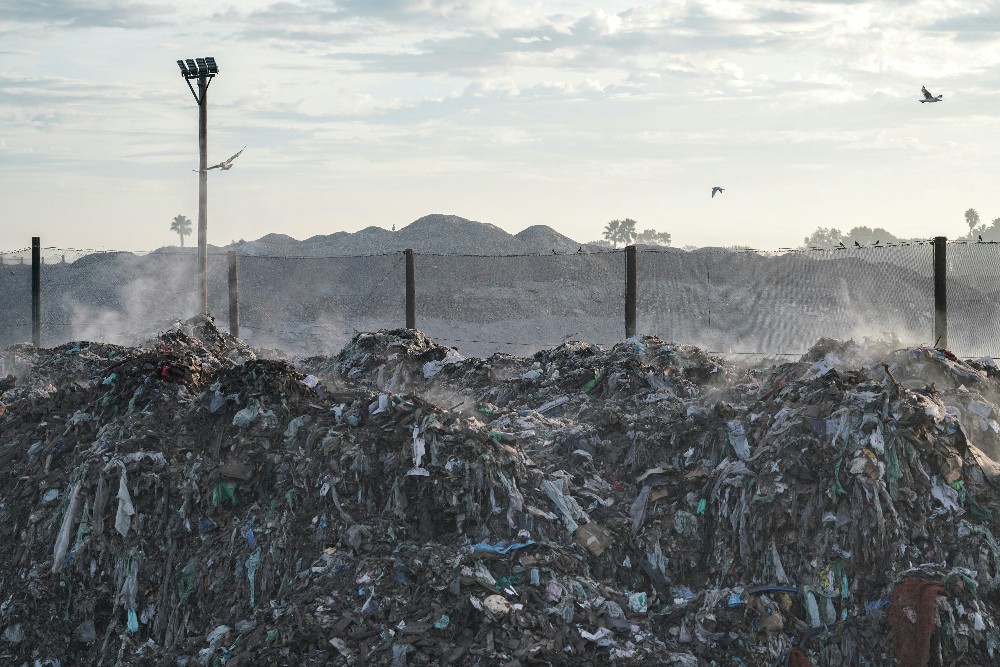
Reforming sustainable waste management systems offers a strategic opportunity to remedy structural inequities and disproportionate pollution burdens historically concentrated in marginalized communities. Key dimensions related to recycling where environmental justice should be considered include:
Inequitable Facility Siting
Low income areas and communities of color face higher likelihood of living near active or decommissioned landfills and incinerators with localized health risks. Transitioning toward zero-waste systems powered by enhanced recycling and organics diversion helps remediate this disparity and associated public health impacts over generations.
Access Inequalities
Many urban neighborhoods and rural towns lack consistent access to waste collection services and supporting waste infrastructure enjoyed by wealthier zip codes. Closing these material recovery gaps represents an essential public service.
Jobs and Ownership
Growing recycling and organics processing industries centered on sustainable materials management must emphasize family-supporting wages, safe working conditions, diversity, and opportunities for community wealth building through cooperative ownership models prioritizing people over profit extraction.
Inclusive Decision-Making
Historically, waste policies and facility permitting failed to adequately include community representation or assess cultural/social impacts on nearby neighborhoods. Prioritizing environmental justice and civic engagement helps guide responsible waste infrastructure planning moving forward.
Pollution Abatement
While recycling alone cannot solve systemic oppression, siting equitable recycling drop-offs and services plus upgrading collection reduces vehicle emissions in overburdened areas. Overall waste reduction also cuts economy-wide emissions and resource extraction damaging the global climate and ecosystems essential for survival.
Incorporating these dimensions builds an ethical foundation for waste policies prioritizing community resilience and livability.
Trends and Technological Advances in Commercial Waste Management
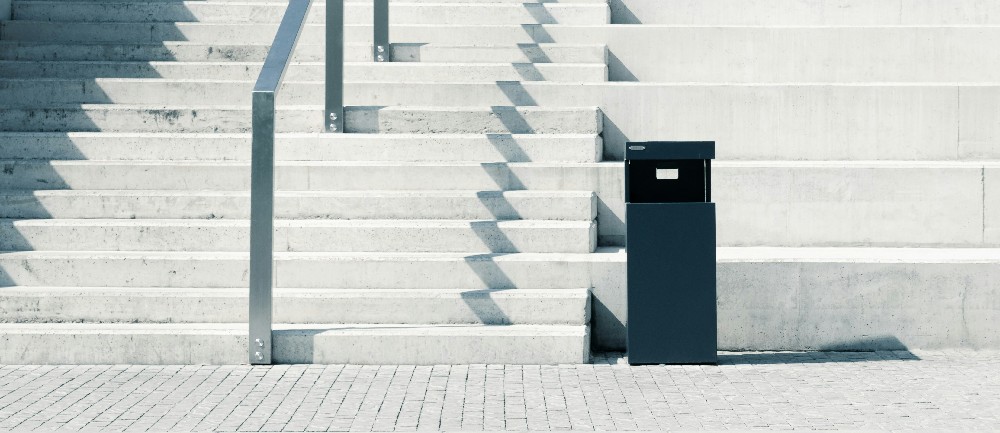
Several promising technology solutions and standards on the horizon will continue improving commercial recycling programs and traceability surrounding material flows:
Smart Sensor Receptacles
Internet-connected compacting bins monitor fill status and enable streamlined route optimization for trash collection using AI-assisted fleet tracking software, reducing pickup frequency by up to 80%. Sensor data also generates analytics on granular waste generation patterns over time and space identifying service gaps.
Automated Sorting
Optical scanning machinery rapidly identifies and sorts discarded materials by type, diverting far more redeemable recyclables from landfills and reducing labor. Materials recovery facilities are adopting next-gen sorting robots and conveyor systems modeled after e-commerce distribution centers to extract value from complex waste streams.
Standardized Labeling and Bin Coding
Industry groups are coalescing around consistent recyclable materials marking specifications through standardized labels on packaging plus common colors and icons on receptacles. These reinforce proper sorting habits through familiarity.
Blockchain-Based Material Tracking
Cryptographic ledgers encoded onto products can trace packaging lifecycles facilitating broad transparency across waste supply chains. QR codes linking materials to blockchain-based repositories also enable incentives around recycling.
Circular Product Designs and Takeback
Applying circular economic principles spurs closed-loop material flows, upcycling of disposed resources, and manufacturer responsibility for taking back products reaching end-of-life. Cradle-to-cradle thinking guides innovations in recycling and waste reduction.
Optimized Collections Through Big Data
Analyzing waste generation rates using sensors and quantitative models identifies efficiencies like dynamically resized receptacles, needs-based servicing, and optimized routes trimming carbon footprints from collection while maintaining continuity through predictive capabilities.
These technology directions promise more automated, digitally integrated and responsive recycling systems benefitting from precision tracking and data-led decision making. Smarter waste infrastructure can significantly expand commercial diversion rates when combined with convenience-oriented receptacles.
About Furniture Leisure
Furniture Leisure has led the commercial outdoor furniture industry since 2003. For over 20 years, we have supplied thousands of customers nationwide with durable, quality furnishings built to withstand intensive public use.
We offer a huge selection of commercial-grade products like picnic tables, trash cans, grills, benches, bike racks, bleachers, and more. Our outdoor amenities include hotels, parks, apartments, campgrounds, offices, and many other public spaces across the country.
At Furniture Leisure, our experienced team works closely with clients to recommend customized furnishing packages tailored to your space and needs. We deliver beautiful, functional outdoor projects within budget.
Contact us today toinvest in quality commercial trash receptacles. Our experts guarantee outstanding service and complete satisfaction.
Frequently Asked Questions
What Is the Purpose of Commercial Trash Cans?
Commercial trash cans provide durable, high-capacity waste receptacles designed for intensive public use in spaces like offices, retailers, institutions, hospitality venues, and municipal sites. They allow centralized consolidation of discarded materials from thousands of occupants for efficient collection, sorting, transfer, and hauling.
How Do Trash Cans Promote Recycling?
Specialized receptacles with effective signage/labeling for source separation of recyclable commodities and organics promote positive recycling behaviors among users through visual differentiation of waste streams paired with convenience. Dedicated openings, compartments, liners, and collection workflows prompt and simplify proper sorting at disposal points.
What Are the Most Sustainable Commercial Trash Can Materials?
The most sustainable models utilize durable, low-maintenance, and where possible, recycled materials like powder-coated steel, recycled polyethylene, recycled plastics, and reclaimed wood. Receptacles built to last 10+ years generate less replacement waste long-term while retaining recyclability. Bioplastics offer plant-based alternatives as well.






























































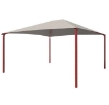

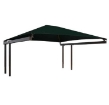

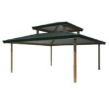













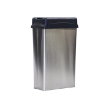

































Leave your comment